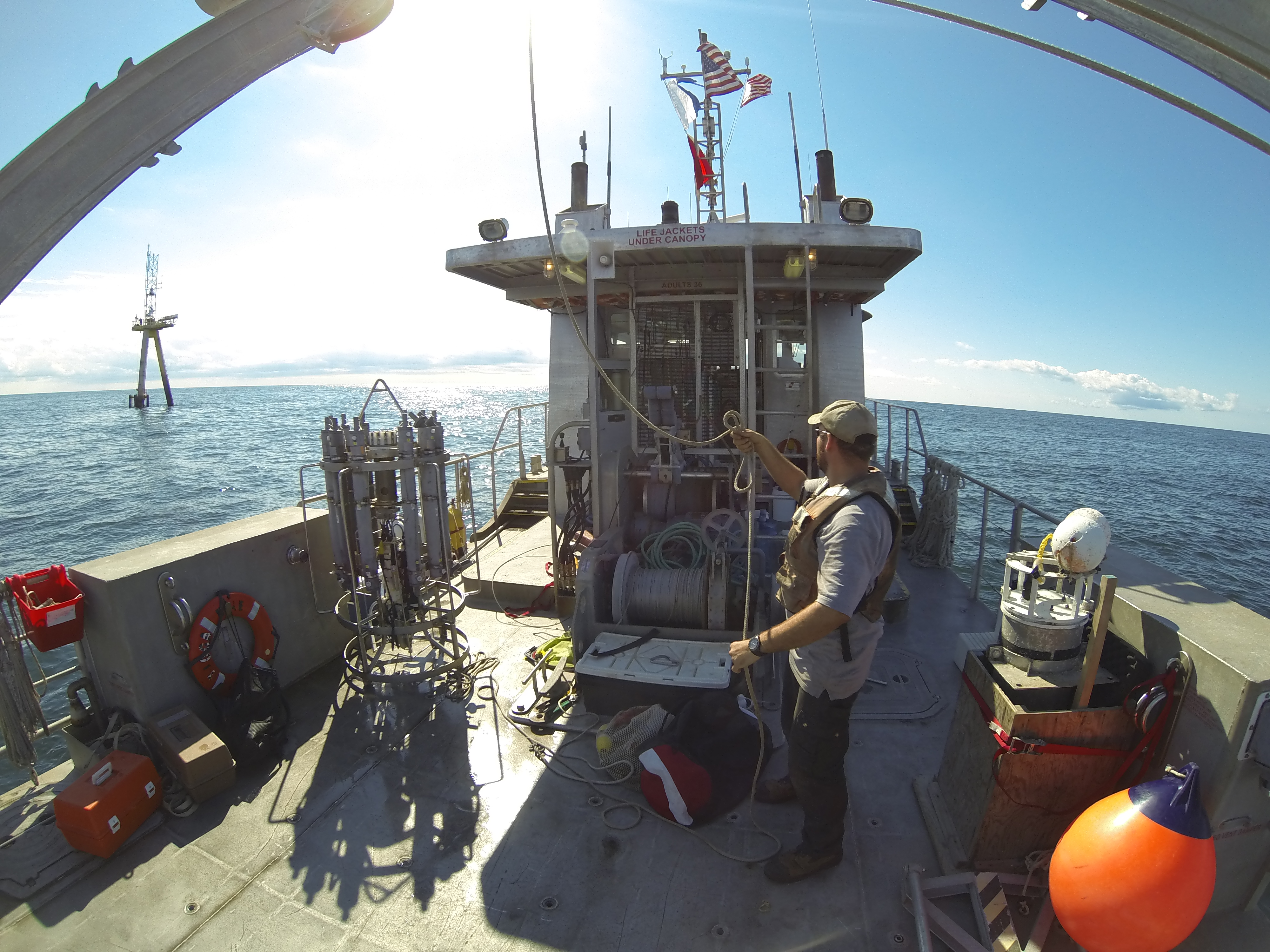News at WHOI

Mate Ian Hanley aboard the R/V Tioga approaching MVCO (Photo by Sean Whelan, Woods Hole Oceanographic Institution)
Posts by WHOI involving Heidi, including press releases, research project information, and and work group involvement.
Imagine if…. we explored a little-known part of the ocean. Below the sunlit surface, there’s a realm known as the ocean’s “twilight zone”. At 200 to 1000 meters below the surface, sunlight is barely a glimmer, yet flashes of bioluminescence give us a clue that these waters teem with life.
Heidi Sosik Selected as a Fellow of The Oceanography Society
January 18, 2018
Heidi Sosik, a senior scientist in the Biology Department at Woods Hole Oceanographic Institution (WHOI) has been named a 2018 Fellow of The Oceanography Society (TOS).
A New Long-Term Ecological Research Site Announced for the Northeast US Shelf
March 1, 2017
To better understand and manage an intricate ecosystem, the National Science Foundation (NSF) has announced the selection of Northeast US coast for a new Long Term Ecological Research (LTER) site led by Woods Hole Oceanographic Institution (WHOI) along with researches at University of Massachusetts, Wellesley College, and the University of Rhode Island.
New 13-year Study Tracks Impact of Changing Climate on a Key Marine Food Source
October 20, 2016
A new multiyear study from scientists at WHOI has shown for the first time how changes in ocean temperature affect a key species of phytoplankton
Field Testing of Imaging FlowCytobot at the Martha’s Vineyard Coastal Observatory
2005
Funding for the initial deployment of Imaging FlowCytobot at the Martha’s Vineyard Coastal Observatory (MVCO using a submersible flow cytometer
Experts Call for Network to Monitor Marine Biodiversity
April 22, 2013
Observations could warn of threats to ecosystem on which humans depend.
July 19, 2012
WHOI researches partnered with 2 companies to build and market undersea technology developed at WHOI.
Mass. Governor Deval Patrick Makes First Visit to WHOI
October 12, 2011
Governor Patrick toured several of the Institution’s labs and was briefed on its robotic vehicle development and ocean observing programs.
WHOI Receives Gordon and Betty Moore Foundation Grant for Oceanography Imaging Informatics
November 9, 2010
WHOI received a more than $2 million grant from the Gordon and Betty Moore Foundation to develop new tools for ocean scientists who work with underwater imagery to better understand the ocean and its ecosystems.
Underwater Microscope Helps Prevent Shellfish Poisoning Along Gulf Coast of Texas
April 9, 2008
Novel instrument developed at WHOI detects harmful algae in coastal waters.
Deployment of a video plankton recorder at the Martha’s Vineyard Coastal Observatory
2008
Project funded for quantification of top-down controls on phytoplankton dynamics obvserved with Imaging.
May 7, 2007
Overview of ocean observing systems at WHOI including Martha’s Vineyard Coastal Observatory (MVCO), Ocean Observatories Initiative (OOI), C/GSN IO Pioneer Array, Integrated Ocean Observing System (IOOS), and Northeast Regional Association of Coastal Ocean Observing Systems (NERACOOS).
A Coastal Ecosystem Research Initiative for the Northwest Atlantic
2007
A proposal funded in 2007 to continue and expand activities related to development and implementation to advance our ability to measure, monitor, and analyze the fundamental processes shaping the northwest Atlantic continental shelf ecosystem.
2006
A proposal funded to explore the feasibility of using autonomous gliders for regular collection of physical and bio-optical properties along a transect spanning the continental shelf between MVCO and the Line W moored climate array.
Novel Instrument Sheds Light on Plankton Populations in Coastal Waters
December 1, 2004
Cabled ocean observatories, like the Martha’s Vineyard Coastal Observatory (MVCO), and new sensors like the Flow Cytobot are enabling scientists to study plankton community structure and processes with unprecedented detail.
Phoning Home from the Ocean Floor – by Computer
October 8, 2004
Ocean observatories linked with cyber infrastructure will change the way marine science is conducted.
The Picoplankton and the Whale
Annual Report, 2003
Biologists Heidi Sosik and Rob Olson have developed the Flow Cytobot, an automated submersible flow cytometer that detects small phytoplankton in situ.
2001
Grant funded for imaging in flow to improve the resolution of pump-during=probe measurements of phytoplankton photosynthetic characteristics.
WHOI Biology Department: Phytoplankton Ecology Working Group